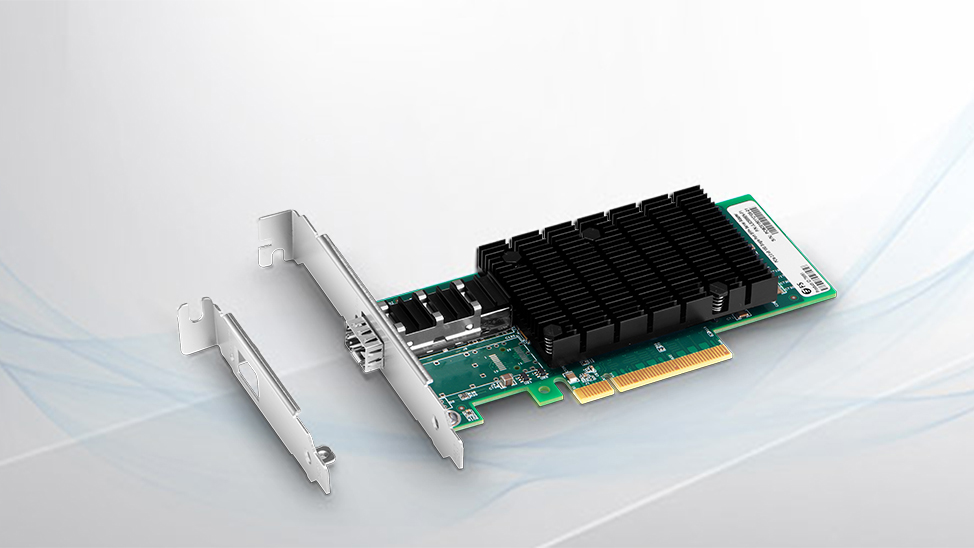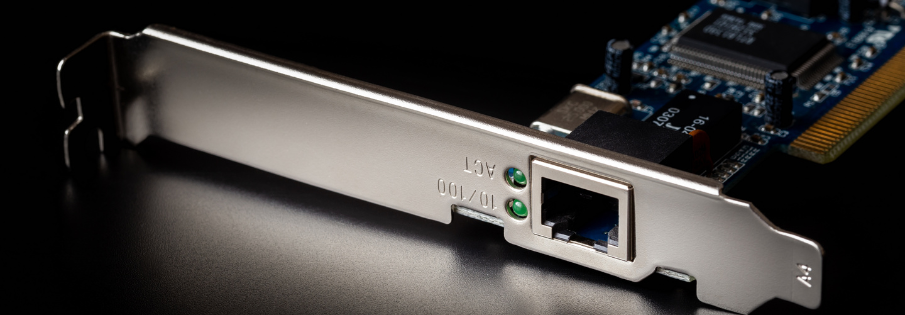What is a Network Interface Card (NIC)?
A network interface card (NIC or network adapter) is an important hardware component used to provide network connections for devices like computers, servers, etc. With its wide applications, there are various types of network interface cards emerging in the market like PCIe cards and server network cards. In this post, we will have a full exploration of this hardware component from what is it to its function, components, and types.
What is a Network Interface Card (NIC)?
A network interface card (NIC), also known as a network adapter card and network interface controller, is a hardware component that allows devices like computers or servers to communicate with computer networks. It generally appears like a circuit board or chip.
Early on, the NIC card was inserted into the computer bus in the form of an expansion card. Later, with the lower price and widespread use of Ethernet, most new computers have pre-integrated a network interface on the motherboard. It will no longer require an individual NIC card unless multiple interfaces or other types of networks are needed.
The purpose of NIC is to connect your computer to a LAN network (Local Area Network) over a cable or wireless. It provides physical layer access to communicate with the data link layer (Ethernet or WiFi) so that computers can communicate on the same LAN network or even communicate over large-scale networks through Internet Protocol (IP).

What is the function of a NIC?
NIC definition is very simple, but what does a network interface card do and what is the function of NIC? Working as an interface at the TCP/IP layer, a NIC card can transmit signals at the physical layer and deliver data packets at the network layer. No matter what layer the network interface controller lies in, it acts as a middleman between a computer/server and a data network. When a user requests a web page, the LAN card gets data from the user device, and sends it to the server on the internet, then receives the required data back from the Internet to display for users.
Network Interface Card types
- Integrated: Network interface cards that are built into the computer’s motherboard, frequently found in laptops and other devices with limited customizability.
- PCI (Peripheral Component Interconnect): Network interface cards that use the computer’s PCI expansion slot. These cards may be freely replaced without affecting the computer’s motherboard. Network interface cards typically use the PCIe (PCI Express) slot, which offers faster data transfer rates than traditional PCI slots.
- USB (Universal Serial Bus): NICs that use one of the computer’s USB ports. USB network interface cards are easy to install, portable, and cheaper than integrated or PCI cards, but they are also slower. As a result, USB cards are typically only used for temporary or mobile connections.
Components of NICs
- Speed. All Network Interface Cards have a speed rating in terms of Mbps which suggests the general performance of the card when implemented in a computer network with ample bandwidth. If the bandwidth is lower than the NIC or multiple computers are connected with the same controller, the labeled speed will be slowed down. The average Ethernet NICs come in 10 Mbps, 100 Mbps, 1000 Mbps, and 1 Gbps varieties.
- Driver. This is the required software that passes data between the computer’s operating system (OS) and the NIC. When a NIC is installed on a computer, the corresponding driver software is also downloaded. Drivers must stay updated and uncorrupted to ensure optimal performance from the NIC.
- MAC address. Unique, unchangeable MAC addresses, also known as physical network addresses, are assigned to NICs. These are used to deliver Ethernet packets to the computer.
- Connectivity LED. Most NICs have an LED indicator integrated into the connector to notify the user when the network is connected and data is being transmitted.
- Router. A router is also sometimes needed to enable communication between a computer and other devices. In this case, the NIC connects to the router which is connected to the internet.

Do you need a Network Interface Card?
A network card is important to consider for custom servers and custom-built computers as it allows this device to communicate with other technologies within your network. The wired connection of a NIC is often quicker, more efficient, and more secure than wireless communication and so remains popular in both a professional setting, as well as in homes around the world.
Conclusion
The performance of the NIC directly affects the data transfer rate of the overall network. Whether you are looking for network adapters for home uses or a server network card for SMB or data centers, it’s necessary to understand what is a network interface card, the components and function of NIC as well as types of NIC before purchasing a NIC.